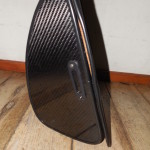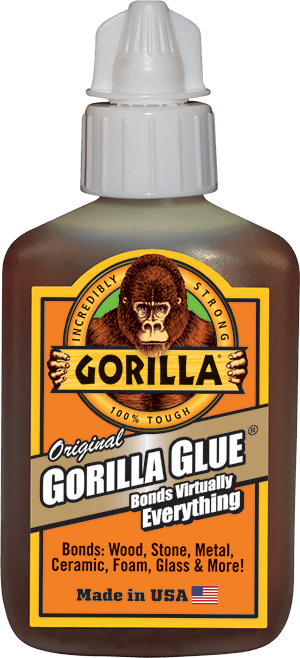Cleaning ADI Back
- Use a soft cloth to clean back shell.
- Hand wash foam pad cover with mild soapy water or detergent, in water temperatures below 160 F (70 C).and let dry.
- Foam pad should not get wet.Wipe gently with a cloth dampened with a household disinfectant. Allow foam to air dry thoroughly.
Repairing Carbon Fiber
This is a good site for some general information about DragonPlate Carbon Fiber repair.
Re-attaching the Trim
It is about 1 year after receiving the seat base, and overall we are very happy with it and it is holding up well. I noticed that the trim has come loose on one side of the seat base and want to make a repair. I’m not really sure if this is just a matter of trying to separate the trim and reattach it, or if I should also be using some type of adhesive, and if so, what type. I also wonder if I should heat the trim to make it more pliable.
Based on this post on Care Cure forums Carbon fiber solid seat pan by strips. What I am reading is that we should probably get a non-hardening adhesive. I’m going to write to ADI and see what they suggest, and will update this with what I learn.
The following is what ADI recommended:
The trim can be reapplied – you will need to clean the existing glue off the trim and carbon. Then you can just glue it back on using super glue. We use a LockTite brand superglue, but Gorilla brand superglue works as well. Heating the trim does make it more pliable and easier to work with, but is not necessary.
And also JeffAdams:
You can just superglue the edging – have a cloth ready to wipe away excess if necessary – just a drop will do, we use Gorilla brand. I would put a a drop at every 1″ increment in the edging that came off, and just push it back onto the panel.
Repairing Cracks and Delamination
We have not needed to do this, but wanted to include it in case we need to.
West System.Take it to a boat place or find someone who repairs carbon fiber bikes or hockey sticks – those two things are pretty commonly repaired.
West has very good epoxies for doing layups or for doing laminated repairs. But for small crack repair or edge bonding, or even filling very small holes, the best solution is an epoxy repair gel. Gels are easier to control, so there is less chance of ruining the adjacent finished epoxy surface or gelcoat. Gel can be applied to vertical surfaces with minimal sag and no runs. It is an excellent gap filler also. I recommend Davcon’s 5 Minute Gel. Fast, cheap, readily available, very strong, and almost clear when cured. Mix it on a paper plate, and apply it sparingly with toothpicks. If the item is somewhat flexible, bend it slightly to open up the crack, and then apply small amounts of the gel down inside the repair. Let it relax and close back up, and then complete the surface fill. Be very conservative with the epoxy. You can always do a second or third application, but if you get it on the adjacent areas, you will mess up the finish. You cannot make an “invisible” repair, but if you are careful, you can minimize the scar. I usually make a slightly raised mound over the crack repair for additional strength.
http://www.lowes.com/pd_74434-34278-…ductId=3819909 Available at most hardware stores, and some department and auto parts. Loctite makes a similar one, but it’s a thinner viscosity and it’s not clear when cured. I also use this to repair nicks in Spinergy’s PBO fiber spokes. Apply it with a small brush. Keeps them from delaminating further.
Stubby has given the best part of the idea, but may be I can help with some other tricks. Before starting, you must make sure that the carbon fiber itself is NOT broken or damaged. A “carbon fiber” part is made of… carbon, impregnated with epoxy resin (most of the time -other resins can be used), and you always have a thin layer, a “top coat” of pure resin on the top. If you bend the part too much, first of all you’ll crack the upper layer of resin, then the inner resin, “inside” the fiber, and finally the carbon fiber itself. When the carbon fiber is broken, you CAN’T make a strong and durable repair WITHOUT putting on some other layers of carbon. No way !
Epoxy resin cures easily if you respect VERY accurately the % of parts needed. You also have to mix the two components perfectly. If not, your resin may stay tacky or will not have its maximal strength. Thus, for small repairs it is easier to use kits, with two syringues of resin parts side by side. It helps a lot to have the good amount of each part. I think the brand of the kit doesn’t matter a lot, sometimes you can choose between a clear, stiff, or viscous product. But I hope they all cure well.
Some warmth is needed for a fastest cure, so don’t work outside if it’s freezing !
And at least, if you want to minimise the scar, you can apply (when the resin is still smooth) a band of tape on the repair (use the brown tape that closes carton boxes) and “laminate” it the best as you can. Then wait for the cure and “demold” it, this method gives a nice finish !

